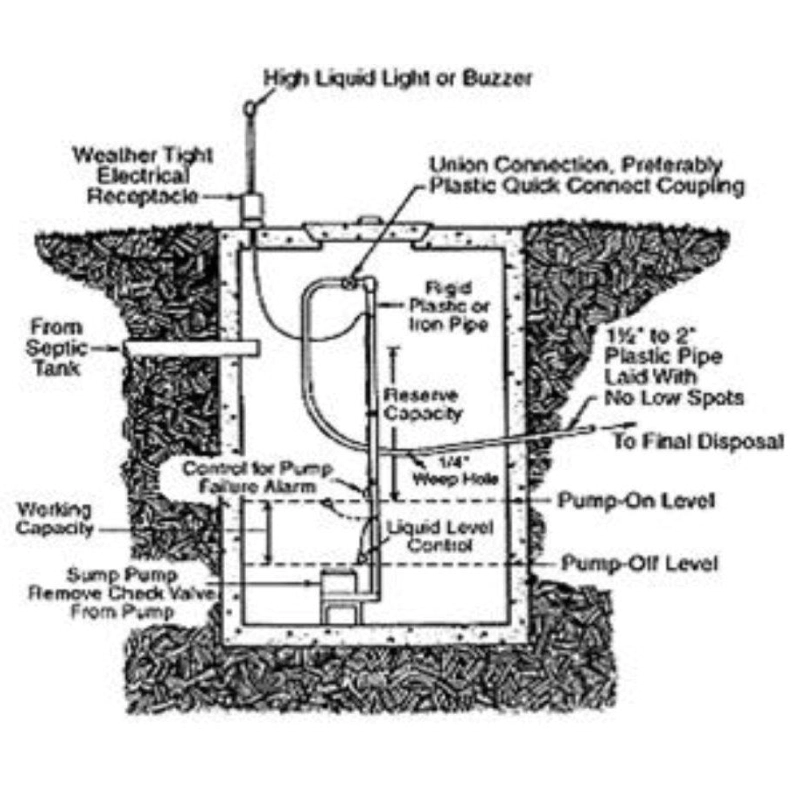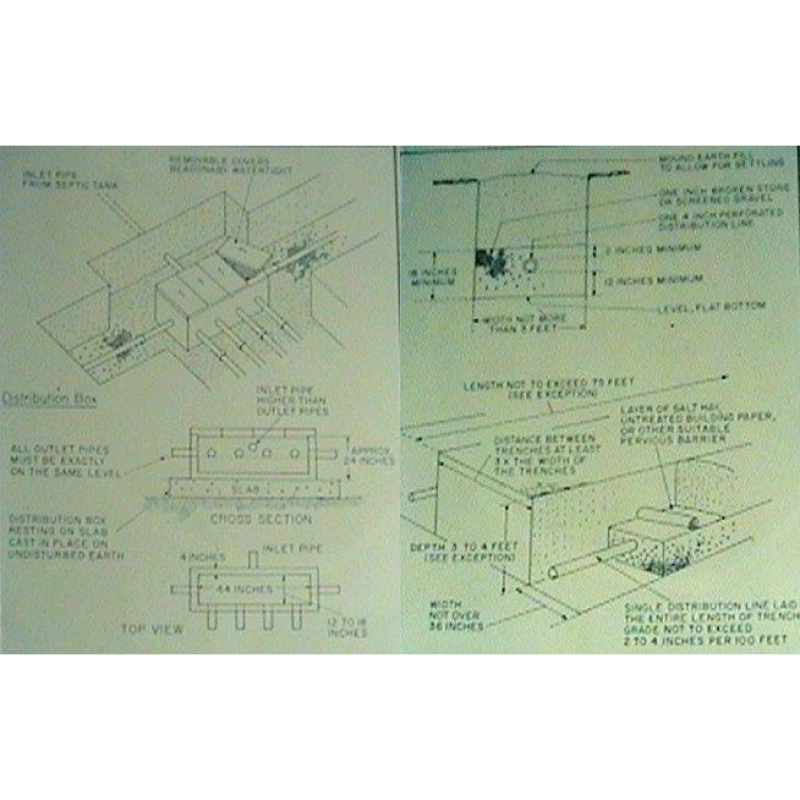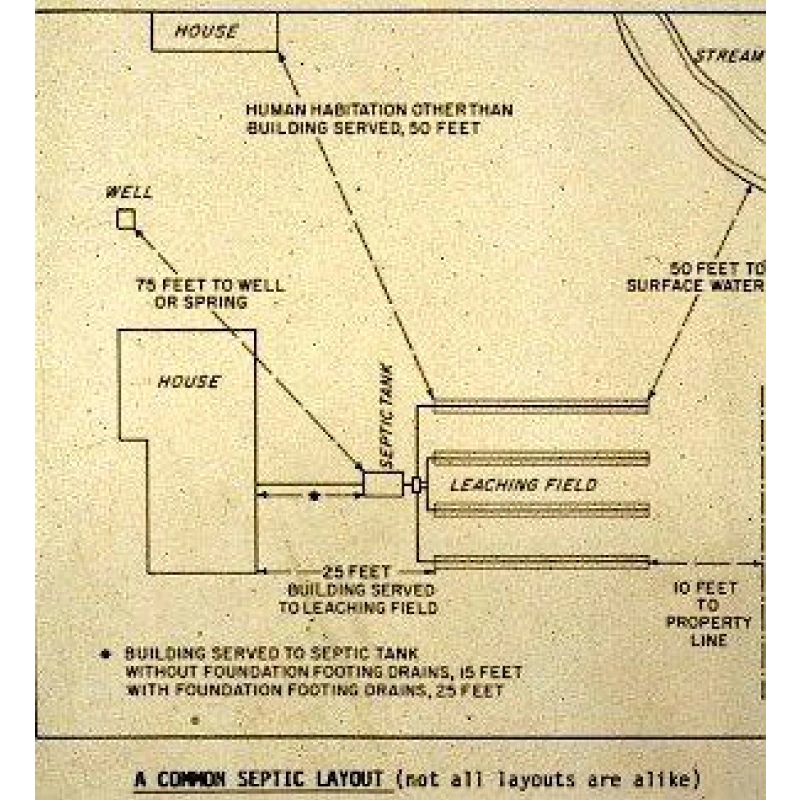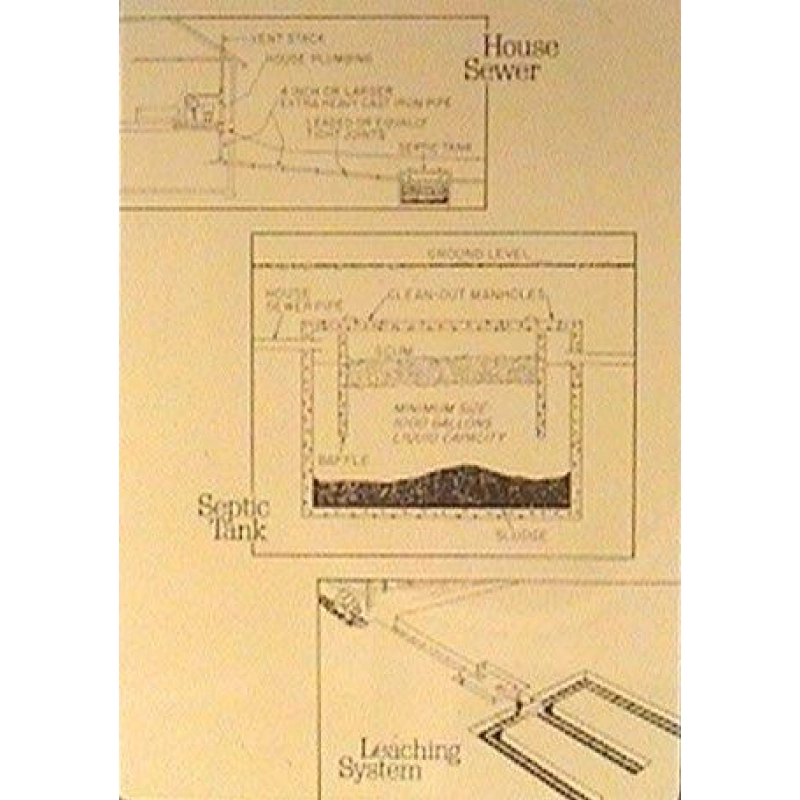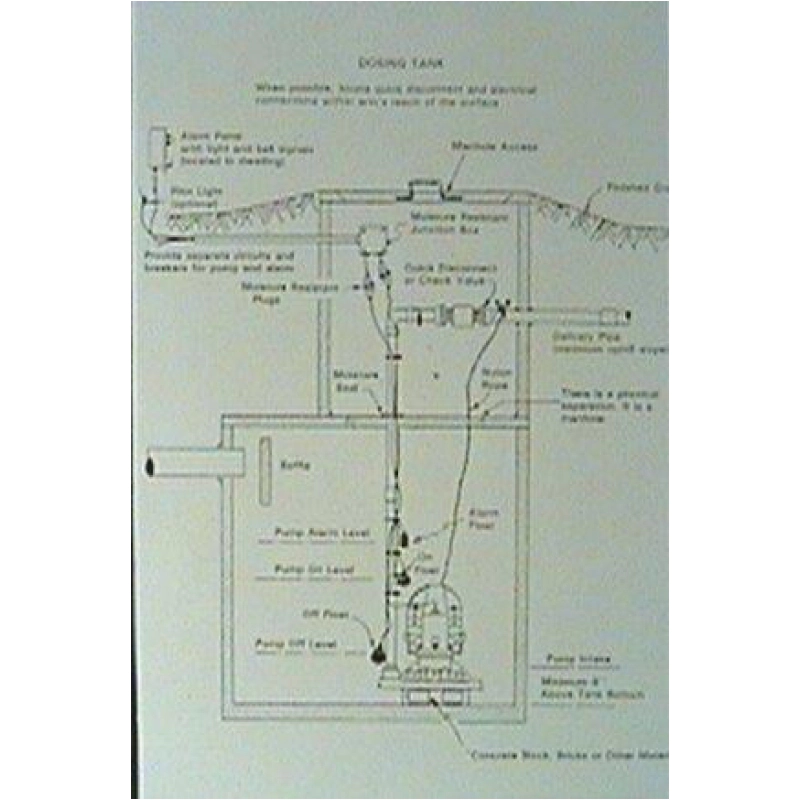Experienced Inspection Service at Your Fingertips
Septic Systems
A “cesspool” is not a septic system. It does not have a septic tank, it is simply a large dry well. “Cesspools” were in widespread use many years ago, but are no longer allowed in most municipalities in Connecticut.
There are other types of more specialized septic systems referred to as “engineered systems ” or pump-up systems”. These are usually employed when the soils around the house do not drain well enough and the effluent must travel uphill to better-draining soils. The only difference between these systems and a regular septic system is that they have an additional tank called a “pump chamber”. The clean liquid from the septic tank overflows into the pump chamber. There is a pump in the chamber triggered by a float switch. When the liquid level in the pump chamber comes up, it trips the float switch, and the pump turns on and pumps the effluent uphill to a drainage field.
How a Septic System Works
The waste material from a home makes its way through the waste piping system to a septic tank. This is an underground tank that is chambered and baffled in such a manner that it retains the organic material in the tank to give the bacteria a chance to break them down. As the bacteria break down the organic material, the undigested material sinks to the bottom of the tank in what is called a “sludge” layer. The undigested fats and soaps float to the top of the tank in what is called a “scum” layer. It is this “sludge” and “scum” that we want to be cleaned out of the tank periodically.
The inlet pipe of the septic tank is slightly higher than the outlet pipe and the tank is supposed to always be full. A half-full or empty tank usually indicates a leak in the tank and this is unacceptable. The theory behind the septic tank is to retain organic material in the tank and allow only cleaner septic effluent to enter the drainage field.
From the tank, the liquid is usually sent to a “distribution box”. This is a concrete box, underground, approximately 18 inches square. It has one inlet pipe from the tank and may have several outlet pipes, depending on how many different drainage trenches are involved in the system. The purpose of the distribution box (D-box) is to slow down the velocity of the effluent coming out of the tank and level it off so it gets distributed equally through all the drainage trenches.
Once again, the theory behind this process is to have relatively clean liquid flowing into the drainage field. It is the drainage field that is expensive to replace and we want to protect it from organic material, which can clog the underground soils and prevent the liquid from dissipating into them.
“In-sink Garbage Disposal” units and private on-site sewage disposal systems do not mix well together. A garbage disposal introduces more organic material into the tank than the bacteria can handle. This allows undigested material to enter the drainage field. A system can be designed to accommodate a garbage disposal, however, most are not.
Flushable items, such as sanitary napkins or diapers should never be introduced into a private on-site sewage disposal system. Nothing that can be thrown into the garbage should ever be sent into a private system.
Cooking fats and oils should be collected in a can and thrown into the garbage. These items do not digest well in a private system and they tend to clog the plumbing pipes as well.
Solvents such as paint thinners, kerosene, turpentine, etc. should never be introduced into the system because they tend to kill bacteria, thereby reducing the ability to digest the organic material.
Photographic chemicals also have a debilitating effect, not only on the system, but they deteriorate the plumbing pipes as well.
The use of laundry detergents and bleach is fine, as long as they are used in moderation.
Maintenance
The septic tank should be pumped of solids at least every three years, more often if a home is heavily populated. The use of any type of chemical that makes claim to improve the system should be avoided.
Testing the Septic System
Most home inspection companies offer a “flood and dye test” or “push test” while conducting a home inspection. When properly conducted, a measured amount of water is introduced into the septic tank along with a tracer dye. The theory behind this method is if there is a gross failure of the system, the dye along with the liquid will surface to the ground, confirming a failed system. Please note that a “flood and dye test” will only confirm a grossly failed system. In most cases, you actually smell the bad system before you see the dye. In addition, it could take a long period of time for this dye to surface.
A more confirming test would be a comprehensive evaluation of the system. This involves uncovering the tank and physically inspecting the interior of the tank and the condition of the baffles. In this type of evaluation, a much clearer picture of the system.s condition is possible. No septic evaluation is 100% conclusive.




